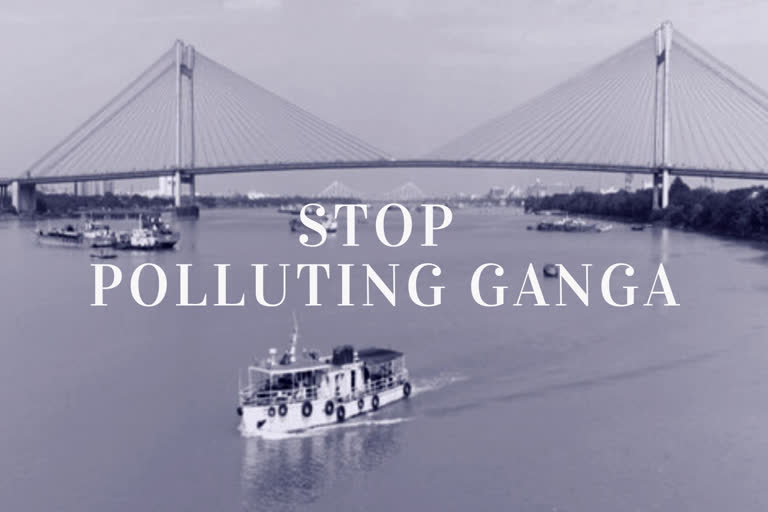Kolkota (West Bengal): The Hooghly or Kati-Ganga flows south for about 260 km into the Bay of Bengal, through a heavy industrialised area with more than half of West Bengal's population.
Household wastewater and industrial effluents flowing directly into the river are the major causes of its pollution.
Also read: NMCG conserves wetlands in Ganga basin
Tolly Nullah, a British-era canal, discharges a large quantity of sewage waste into the river.
Under the pollution abatement and rehabilitation works, three sewage treatment plants will be set up with funds from the Namami Gange to stop the flow of sewage from Tolly Nullah into the Hooghly.
Rajiv Ranjan Mishra, Director General of National Mission for Clean Ganga said, "It has been converted into a big nullah. At one point it was called Adi Ganga. So, it was the king of the river. But, it has degenerated over a period of time. We have some problems with that project. 26 MLD STP we want to construct and then intercept this sewage to that STP and clean it up. We have sanctioned the project and the state is calling up tender".
He added, "There are certain issues of encroachment and people settling along that nullah, so I think all these things are taken care up by the state and local authorities and we will ground this project".
A few kilometers from Kolkota is Barrackpur, the site of the first cantonment of British East India Company.
Located on the banks of Hooghly, Barrackpur is now a densely populated city. It lacks sewage treatment plants, and consequently, its wastewater flows directly into the river.
Under the Namami Gange programme, work on the 150 km long sewage network is going on at a rapid pace. It will connect over 35,000 households.
The city's household wastewater will be diverted to sewage treatment plants with capacities of 18 MLD and 6 MLD, which are under construction.
The sewage treatment plants are expected to be operational by early 2020.
Chandranath Mukherjee, Asst. Construction Manager, L&T said, "Dirty wastewater was flowing directly into the Ganga. After completion of this project, this will not happen. Sewage will be treated and solid waste will be used for agricultural purposes as organic manure. Treated water will be diverted to the Ganga through a canal".
Rohit Yadav, Sr. Engineer at the site said, "When we were talking to people about the benefits of this project - cleanliness, and eradication of mosquitoes by treating wastewater - they were positive about it. The locals are cooperating with us".
As part of its pollution abatement initiatives, the National Mission for Clean Ganga has also constructed and renovated old Ganga ghats in Barrackpur and its adjoining areas.
Also read: Zomato acquires Uber Eats business in India
Under the Namami Gange programme, various activities such as treatment of municipal sewage, treatment of industrial effluent, river surface cleaning, ghats, and crematoria work have been taken up.
All these efforts aim towards fulfilling the objective of Namami Gange, which is a continuous flow and unpolluted flow of the Ganga.



